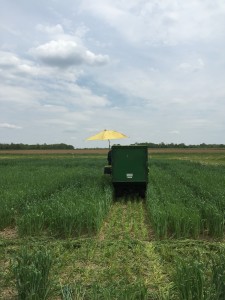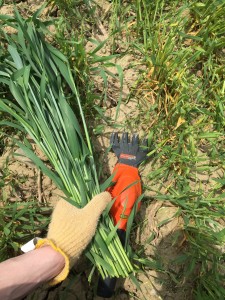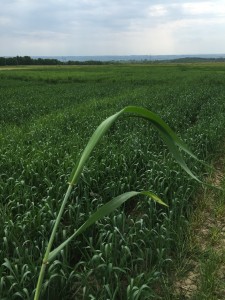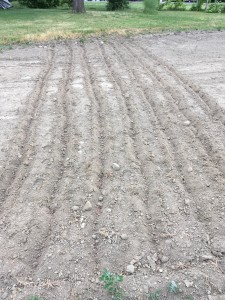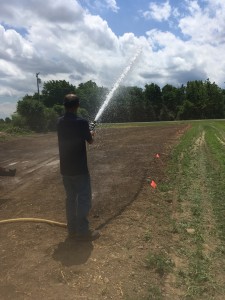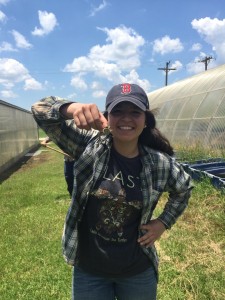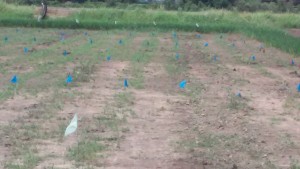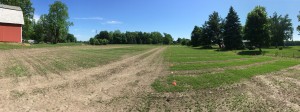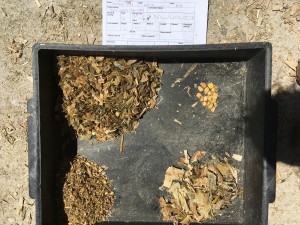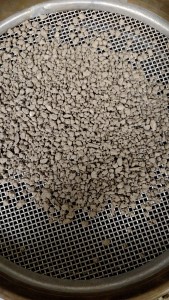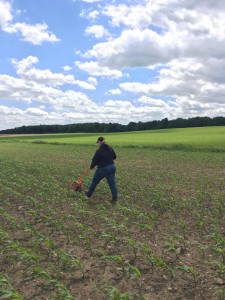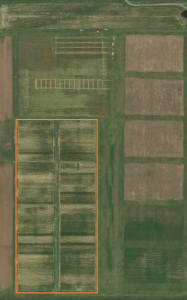In the first week of my internship, I helped to harvest the triticale at the Musgrave experimental station at Aurora. The triticale was planted as part of the double cropping system trial, which involved both triticale and sorghum grown in consecutive order on the same land. Compared with conventional monocropping of corn, the double cropping system of triticale and sorghum tends to have higher total yield. It also spreads the risk of crop failure, that even if one crop suffers from diseases or environmental stresses in its growth period, farmers may still have the other crop to rely on.
To evaluate the performance of double cropping system in NY state and provide suggestions about nutrient management for farmers, the field experiment was conducted to measure the yield and forage quality of triticale-sorghum double cropping system and to figure out the effect of residual nitrogen that previous triticale left on the following sorghum. The triticale field was divided into 4 blocks, and each blocks had 4 replications. Each replication was then divided into 5 plots that received different rates of nitrogen treatment. So there were 80 plots of triticale for us to harvest.
The harvest of triticale in each plot was completed by a forage harvester. It also recorded the weight of harvested forage in each plot. I walked after the harvester and measured the length of harvested area. The width of the harvester was fixed, so with length and weight we could calculate the fresh yield of each plot. After the harvest, I took triticale samples in each plot for quality analysis.
It took us about 4 hours to complete all the harvest and sampling. Fortunately, the weather was not hot and the breeze in field kept us comfortable. The harvester created pathways that went through the 5 plots in each replication, and I enjoyed sitting in the middle of the plot, where I was surrounded by waves of green leaves that moved as wind blew. It was a such a relaxing experience that I even forgot the time to leave.

